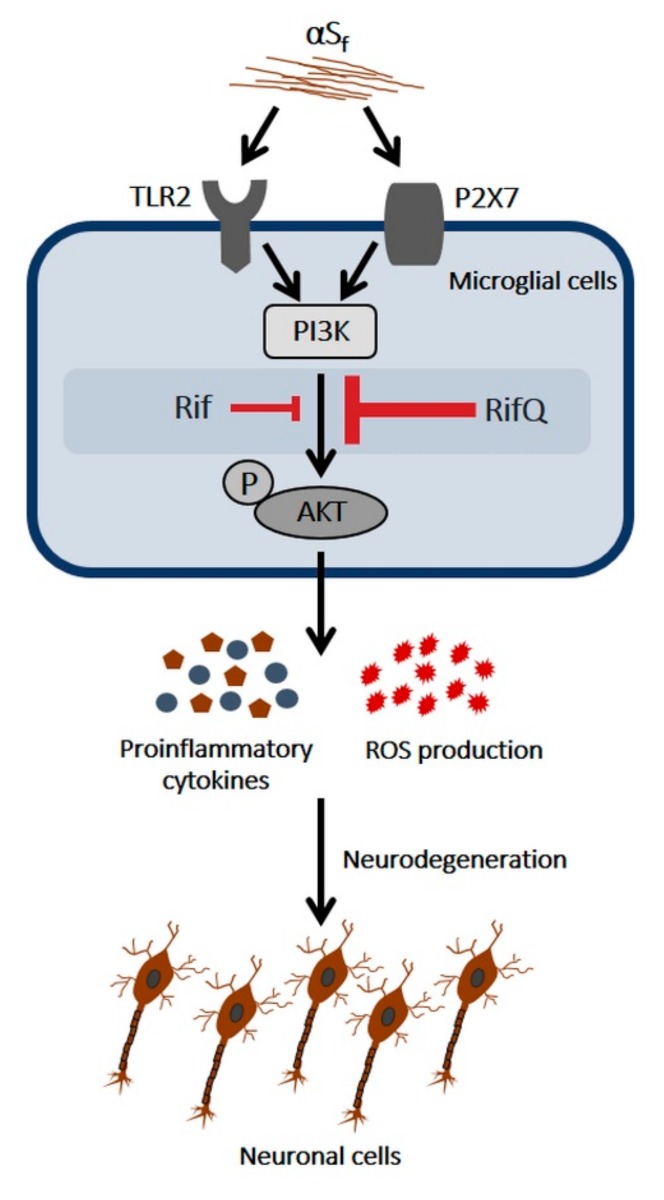Figure 8.
Simplified scheme describing how Rif and RifQ attenuate the inflammatory response of microglial cells exposed to αSf. Microglial TLR2 and P2X7 receptors recognize fibrils of αS, which results in AKT phosphorylation by PI3K. This leads to stimulation of cytokine release and to a burst of oxidative stress, presumably by activation of the reduced nicotinamide adenine dinucleotide phosphate oxidase enzyme. Both pro-inflammatory cytokines and ROS are potentially deleterious for neuronal cells. The suppressive effect of Rif and RifQ on cytokine release is probably due to inhibition of both PI3K and non-PI3K-dependent signaling events. The control of oxidative stress appears, however, essentially dependent on PI3K inhibition. The inhibitory effects that Rif and RifQ exert on activated microglia may provide indirect protection to neuronal cells. RifQ appears constantly more effective than Rif in reducing inflammatory-type reactions and in providing neuronal rescue.

